

Build-a-Cell. Overview Build-A-Cell is a drag and drop game to teach students about the organelles and organelle substructures within a plant, animal, bacterial, and fungal cell.
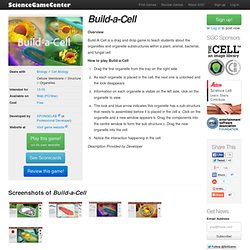
How to play Build-a-Cell Drag the first organelle from the tray on the right sideAs each organelle is placed in the cell, the next one is unlocked and the lock disappearsInformation on each organelle is visible on the left side, click on the organelle to viewThe lock and blue arrow indicates this organelle has a sub-structure that needs to assembled before it is placed in the cell a.
Click on the organelle and a new window appears b. Colored Flame Candles. Science Theme Units. Data Handling and Probability Resources. About Your Guts « I Heart Guts. Genetics. Genetics includes the study of heredity, or how traits are passed from parents to offspring.

The topics of genetics vary and are constantly changing as we learn more about the genome and how we are influenced by our genes. Inheritance Mendel & Inheritance – powerpoint presentation covering basics of genetics Simple Genetics Practice – using mendelian genetics and punnett squares Genetic Crosses with two traits – basic crosses, uses Punnet squaresGenetic Crosses with two traits II – basic crossses, uses Punnett squaresDihybrid Crosses in Guinea Pigs (pdf) – step through on how to do a 4×4 punnett square Codominance & Incomplete Dominance – basic crosses involving codominance X-Linked Traits – practice crosses that involve sex-linkage, mainly in fruitflies The Genetics of Blood Disorders – a worksheet with genetics problems that relate to specific disorders: sickle cell anemia, hemophilia, and Von Willebrand disease.
Human Genetics Presentation Chromosomes Modeling Chromosomal Inheritance. Home. Site display: Normal | Text Only My Collection | About Us | Teachers Science Museum.

Biologists Lesson Plans. Kids' Games, Animals, Photos, Stories, and More.
The effect of rattlesnake venom on blood. Stop Bleeding Instantly! Fireworks to become a little greener › News in Science (ABC Science) News in Science Friday, 3 July 2009 Emily SohnDiscovery News Scientists are working on a new generation of kinder, gentler pyrotechnics that produce less smoke and use fewer toxic metals.
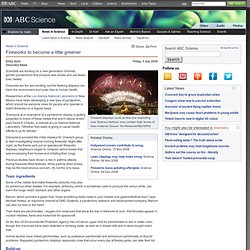
Fireworks are fun and exciting, but the flashing displays can harm the environment and pose risks to human health. Researchers at the Los Alamos National Laboratory in New Mexico have been developing a new type of pyrotechnic, which should be welcome news for people who operate or watch fireworks on a regular basis. "Everyone at or downwind of a pyrotechnic display is getting subjected to levels of these metals that aren't natural levels," says David E Chavez, a chemist at Los Alamos National Laboratory.
Disneyland provided the initial impetus for Chavez's group to start investigating cleaner burning fireworks. Previous studies have shown a rise in asthma attacks during fireworks-filled festivals. Toxic ingredients. The Cell: An Image Library. The Cell: An Image Library. The Path of Blood through the Human Body.
The Nine Planets Solar System Tour. The Meissner effect. How To Squeeze Boiled Egg In Bottle. Science Education. Fun Tech & Science Projects Videos. Experiments Archives Teaching Science Well. This is an easy experiment that has a colorful ending!
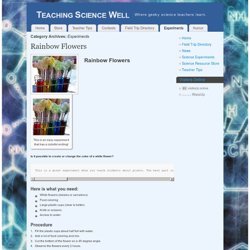
Is it possible to create or change the color of a white flower? This is a great experiment when you teach students about plants. The best part is that you can use this for any grade level from K-12 when studying plants. The level of differentiation can be molded by explaining more about roots, xylem, phloem, transpiration and water absorption in plants. Here is what you need: White flowers (daisies or carnations)Food coloringLarge plastic cups (clear is better)Knife or scissors.Access to water. Procedure Fill the plastic cups about half full with water.Add a lot of food coloring and mix.Cut the bottom of the flower on a 45 degree angle.Observe the flowers every 2 hours.
How does it work? Gummy Bear + Potassium Chlorate. Easy way to teach fractions using Legos to children. GoREACT. Science Visualization Challenge 2013. Density Tower - Magic with Science. Start your column by pouring the honey into the cylinder.
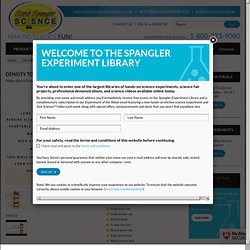
Now, you will pour each liquid SLOWLY into the container, one at a time. It is very important to pour the liquids slowly and into the center of the cylinder. Make sure that the liquids do not touch the sides of the cylinder while you are pouring. It’s okay if the liquids mix a little as you are pouring. The layers will always even themselves out because of the varying densities.
The same amount of two different liquids will have different weights because they have different masses. To test this, you might want to set up a scale and measure each of the liquids that you poured into your column. Density is basically how much "stuff" is smashed into a particular area... or a comparison between an object's mass and volume. If you can read this message… Activities. Tree of Life: What is Phylogeny. Biologists estimate that there are about 5 to 100 million species of organisms living on Earth today.
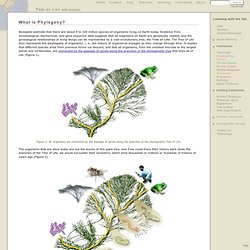
Evidence from morphological, biochemical, and gene sequence data suggests that all organisms on Earth are genetically related, and the genealogical relationships of living things can be represented by a vast evolutionary tree, the Tree of Life.